
Series of videos on the US History created by the team at Crash Course
- Subject:
- History
- Social Studies
- Material Type:
- Lesson
- Provider:
- Crashcourse
- Date Added:
- 05/21/2018

Series of videos on the US History created by the team at Crash Course
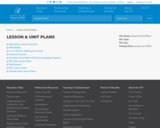
Listed here are unit plans currently available for elementary, middle and secondary levels.
Enter subject or grade level into our keyword search to explore available unit plans or use the filters for level and subject.
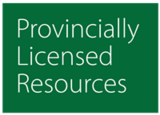
Universalis Senior is a French encyclopedia that provide advertisement-free, high-quality information. This resource is appropriate for immersion students in Grades 9 –Grade 12.

Visit another of Canada's wonderful art galleries. Virtual tours of this colourful location are available through Google Streetview, which lets you walk past geometric landscape paintings and a melting steel structure, among other art pieces.
Be sure to click on the "Home" and "Explore" tabs at the top of the page to discover even more great learning opportunities on a wide range of topics.
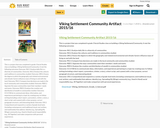
This is a project that was completed in grade 3 Social Studies class on building a Viking Settlement/Community. It met the following outcomes
Outcome: IN3.1 Analyze daily life in a diversity of communities.
Outcome: IN3.2 Analyze the cultures and traditions in communities studied.
Outcome: DR3.2 Assess the degree to which the geography and related environmental and climatic factors influence ways of living on and with the land.
Outcome: PA3.1 Compare how decisions are made in the local community and communities studied.
Outcome: RW3.1 Appraise the ways communities meet their members’ needs and wants.
Outcome: RW3.2 Analyze the creation and distribution of wealth in communities studied.
Outcome: CC3.4 Write to communicate ideas, information, and experiences pertaining to a topic by creating easy-to-follow writing (including a short report, a procedure, a letter, a story, a short script, and a poem) with a clear purpose, correct paragraph structure, and interesting detail.
Outcome: CR3.1 Comprehend and respond to a variety of grade-level texts (including contemporary and traditional visual, oral, written, and multimedia) that address: identity (e.g., Spreading My Wings) community (e.g., Hand in Hand) social responsibility (e.g., All Together) and make comparison with personal experiences.

Students explore a variety of sources for information about voting. They evaluate the information to determine if it is fact or opinion, and then create a graffiti wall about voting.
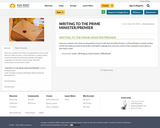
Have your students share their burning political concerns with their local MLA, Premier,
or Prime Minister in a letter writing activity that addresses both Social Studies and
English Language Arts outcomes. Listen to their animated conversations as they await a
reply!

The Sacred Relationship brings Aboriginal worldview right into your classroom and community. Download easy-to-teach lesson plans based on series of fifteen educational videos. The videos feature perspectives on water from Aboriginal Elders, leaders and Western Scientists.
Contact us and get access to the curriculum
Teachers across Canada can log in free of charge and get access to:
Grade 5 Science – Wetland Eco-Systems
Eleven Lesson Plans
Six Online Videos
Grade 5 Social Studies – Histories and Stories of Ways of Life in Canada
Four Lesson Plans
Four Online Videos
Grade 6 Science – Evidence and Investigation
Three Lesson Plans
Three Online Videos
Grade 6 Social Studies – Citizens Participating in Decision Making
One Lesson Plan
One Online Video
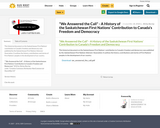
This historical document on the Saskatchewan First Nations' contribution to Canada's freedom and democracy was published by the Saskatchewan First Nations Veterans’ Association. It outlines the history, contributions and stories of First Nations' peoples in the development of our country.

Review treaty vocabulary and concepts.
A reproducible student worksheet
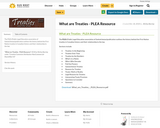
The PLEA (Public Legal Education association of Saskatchewan)publication outlines the history behind the First Nation treaties in Canadian history and their relationship to the law.

As we get into our unit on stratification, we inevitably return to our old friends, the three sociological paradigms. How to structural functionalism, social conflict theory, and symbolic interactionism each think about stratification? How does ideology and help stratification reproduce itself? What did Marx and Weber have to say about all of this? And at the micro level, how does stratification work in everyday life?

The Wonderment is an ambitious global community that aims for public good through student engagement. Kids will love the creative challenges that force them to look, listen, think, and create. Sharing and seeing submissions from around the world builds understanding and empathy.
Students can search things that they want to make, people that they want to meet, topics they want to learn about, and changes they want to make in their lives and the world.
Free resources for students grades 1-12.

Series of videos on World History created by the team at Crash Course

Now that we’ve talked a little bit about how sociology works, it’s time to start exploring some of the ideas of the discipline’s founders. First up: Émile Durkheim. We’ll explain the concept of social facts and how Durkheim framed sociology as a science. We’ll introduce the idea of common consciousness and how Durkheim believed it binds society together. We’ll also talk about Durkheim’s studies on suicide and how he applied his concepts to a specific social problem.